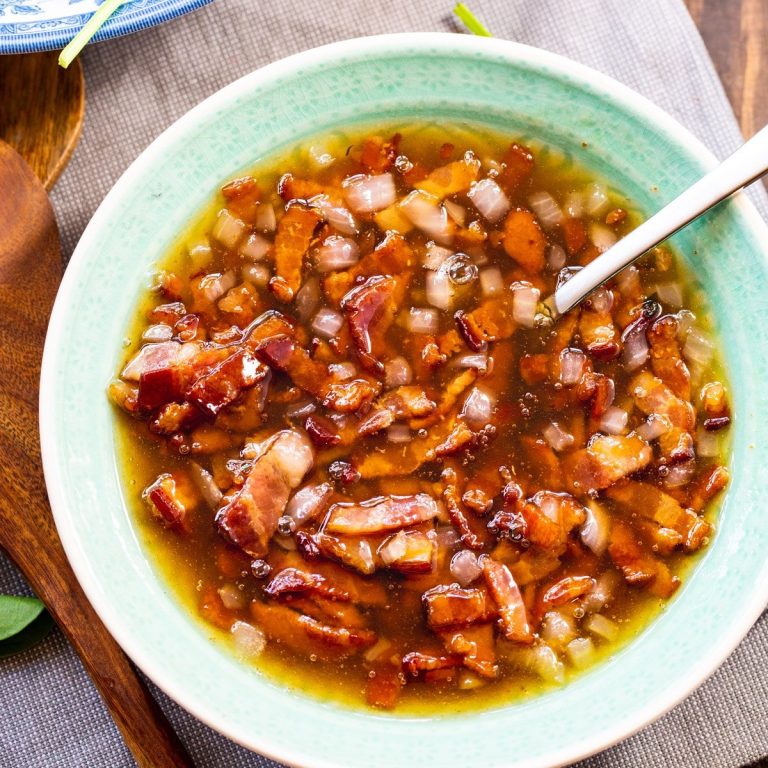Indian Saag: Discover the Origins, Variations, and Health Benefits
Saag has deep roots in Indian cuisine, tracing back centuries. Originating in the Punjab region, Saag gained popularity due to its accessibility and nutritional value. Historical records suggest that various forms of Saag were consumed during the ancient Vedic period. Rich in vitamins and minerals, this leafy green dish became essential in the diet of rural households.
Saag in Festivals and Daily Life
Saag plays a significant role in Indian festivals and daily life. In Punjabi culture, Sarson da Saag, made from mustard greens, is traditionally prepared during winter and served with Makki di Roti. This hearty combination is especially popular during the festival of Lohri, celebrating the harvest season.
During other regional festivals, variations of Saag are prepared to honor local customs. In Bengal, Palong Shaak (spinach Saag) is common during Durga Puja. Despite regional differences, Saag maintains its status as a staple dish in Indian households, offered as a nutritious and flavorful component of everyday meals.
Key Ingredients in Traditional Saag Recipes
Must-Have Greens for Authentic Saag
In traditional saag recipes, specific greens are essential. These greens include spinach, mustard greens, and fenugreek leaves.
- Spinach: Spinach provides a rich source of iron and vitamins, offering a smooth texture.
- Mustard Greens: Mustard greens give saag its distinct, slightly bitter flavor. They’re high in vitamins K and C.
- Fenugreek Leaves: Fenugreek adds a unique, mildly sweet and nutty taste. It’s rich in soluble fiber and helps enhance the overall flavor profile.
Combining these greens brings balance in taste and nutrition, making authentic saag flavorful and healthy.
Common Spices and Seasonings
Saag is flavorful, due to its variety of spices and seasonings. You’ll find these elements in almost every traditional saag recipe:
- Cumin Seeds: Adds an earthy, aromatic touch.
- Turmeric: Provides a warm, bitter flavor and a golden color.
- Ginger and Garlic: Enhances the taste with pungent and spicy undertones.
- Garam Masala: Offers a complex blend of sweet, spicy, and warm flavors.
- Green Chilies: Adds heat and a subtle peppery flavor.
- Salt: Enhances all the natural flavors present in the dish.
These spices form the foundation of saag, providing depth and complexity to the dish, making each bite a flavorful experience.
Variations of Saag across Different Regions of India
Punjabi Saag
Punjabi Saag, commonly known as Sarson da Saag, features prominently in Punjabi cuisine. You will often find it made with mustard greens, spinach, and fenugreek leaves, combined to create a rich, creamy texture. The dish is traditionally spiced with ginger, garlic, green chilies, and garam masala, enhancing its robust flavor. Served hot, it’s usually paired with Makki di Roti, a type of cornmeal flatbread, and topped with a dollop of white butter or ghee, adding a touch of richness. Sarson da Saag is especially popular during the winter months when mustard greens are in season.
Kashmiri Haak
Kashmiri Haak is a unique variation of Saag from the Kashmir region. It’s made primarily with Kashmiri Haak (collard greens), renowned for their tender texture and mild taste. The preparation of Haak Saag involves cooking the greens in minimal spices, typically just asafoetida and dried red chilies, emphasizing the natural flavor of the greens. Sometimes, a few cloves of garlic are added for extra depth. You’ll notice that unlike its Punjabi counterpart, Kashmiri Haak has a lighter, soupy consistency, making it a comforting dish often enjoyed with steamed rice.
Both Punjabi Saag and Kashmiri Haak reflect the culinary diversity within India, each offering distinct flavors and textures that highlight regional ingredients and traditional cooking methods.
Cooking Methods and Tips for Perfect Saag
Traditional Versus Modern Cooking Techniques
Traditional cooking techniques for Saag involve slow-cooking over a wood or charcoal fire. This method enhances the flavors of mustard greens, spinach, and fenugreek leaves. Ideally, you cook the greens until they achieve a creamy texture. A manual grinder, or a “pestle and mortar,” is then used to blend the greens, preserving their fibrous nature.
In contrast, modern techniques utilize electric stovetops and pressure cookers to reduce cooking time. Many use blenders or food processors for a smoother consistency. These tools save time and effort, though some argue they may slightly alter the dish’s traditional texture. Balancing convenience and authenticity is key to modern adaptations.
- Fresh Ingredients: Always use fresh greens like mustard, spinach, and fenugreek. Freshness directly impacts flavor and nutritional value.
- Spice Balance: Incorporate spices like cumin seeds, turmeric, and garam masala in moderation. Over-spicing can overpower the greens.
- Slow Cooking: For authentic texture, slow-cook the greens. If using a pressure cooker, be mindful of the time to avoid overcooking.
- Blending: If using a blender, pulse slowly to maintain some texture. Over-blending can turn the Saag too smooth, losing its traditional consistency.
- Fat Source: Use ghee or mustard oil for sautéing spices. These fats contribute to authentic flavors that distinguish a perfect Saag.
- Accompaniments: Pair Saag with traditional accompaniments like Makki di Roti (cornbread) or plain rice. These enhance the overall dining experience.
Maintaining the balance between traditional flavors and modern convenience ensures your Saag is both authentic and practical, celebrating its rich cultural heritage.
Health Benefits of Eating Saag
Nutritional Content Overview
Saag, especially varieties like spinach, mustard greens, and fenugreek leaves, offers significant nutritional value. Spinach contains essential vitamins such as A, C, and K, alongside minerals like iron and calcium. Mustard greens boast vitamin K, fiber, and antioxidants, supporting bodily functions and overall wellness. Fenugreek leaves, although used more sparingly, provide fiber, protein, and vitamin C, enhancing the wholesome nature of Saag.
| Nutrient | Spinach (per 100g) | Mustard Greens (per 100g) | Fenugreek Leaves (per 100g) |
|---|---|---|---|
| Calories | 23 | 27 | 49 |
| Vitamin A (% RDA) | 56 | 118 | 6 |
| Vitamin C (% RDA) | 47 | 34 | 4 |
| Calcium (% RDA) | 10.3 | 6.6 | 3 |
| Iron (% RDA) | 15 | 8 | 2.6 |
How Saag Supports Overall Health
Eating Saag impacts your health positively by providing high levels of dietary fiber and antioxidants. The fiber in greens like mustard helps improve digestive health and maintain healthier cholesterol levels. Antioxidants, prevalent in both spinach and mustard greens, protect your cells from oxidative stress, reducing the risk of chronic diseases. Additionally, vitamins A and C in Saag boost your immune system and improve skin health.
The potassium found in Saag’s leafy greens aids in regulating blood pressure, while calcium and iron support bone health and oxygen transport, respectively. Regular consumption of Saag can contribute to better eye health due to spinach’s high vitamin A content. Including Saag in your diet helps balance nutritional intake, supporting holistic well-being.
Conclusion
Indian Saag isn’t just a flavorful dish; it’s a nutritional powerhouse that can significantly boost your health. By incorporating Saag into your diet, you’re not only enjoying a delicious meal but also reaping the benefits of essential vitamins, minerals, and antioxidants. Whether you prefer the traditional Punjabi Saag or the unique flavors of Kashmiri Haak, this versatile dish offers a perfect blend of taste and health. So, the next time you’re looking for a nutritious and satisfying meal, remember that Saag is an excellent choice that brings together the best of Indian culinary tradition and modern health benefits.






